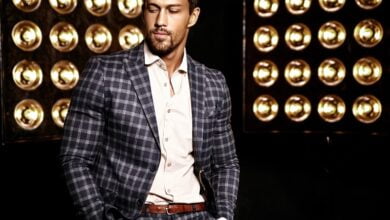Why Should You Choose MX.to Fashion Kingdom?

The fashion industry is on the verge of a new era, and the principles of sustainability are driving not just the upcoming trends and breakthroughs but also its foundation. Consumers, industry professionals, and forward-thinking brands are paving the way to combine aesthetics with the pressing need to protect the environment. It’s a deliberate change that will continue to grow and persist rather than being a fleeting fad. Let’s investigate the diverse realm of sustainable fashion, taking a close look at the developments that are paving the way for this shift as well as the trends that offer a greener future.
The Growth of Eco-Friendly Clothing
Over the past ten years, there has been a notable shift in patterns of customer behavior, as evidenced by the notable increase in demand for stylish clothes that are also created in an ethical and environmentally conscious manner. The rapid shift in customer sentiment has made it necessary for the fashion sector to review its procedures.
A Green Constraint Among Shoppers
Nowadays, a growing number of consumers consider how their purchases may affect society and the environment. As a result, there is a growing market for environmentally conscious companies that prioritize sustainability. Customers have become more knowledgeable and are closely examining the materials, manufacturing procedures, and places of origin of the clothing they buy.
The Sector’s Critical Appeal for Sustainability
The fashion industry is currently under pressure to implement more sustainable practices because of its well-known high waste and carbon impact. Industry titans are being forced to shift course due to the detrimental impact of rapid fashion on the environment. Going green is becoming a popular necessity rather than a niche passion.
Fashion Trends for Sustainable Materials
Several major trends that envision a world whose style is not acquired with a cost of the environment are weaving their way into the fabric of fashion’s future.
Closure-Loop Systems and Circular Fashion
The idea of ‘closing the loop’—constantly recycling and upcycling materials and clothing to reduce waste and lessen the demand for virgin resources—is the foundation of the fashion circular movement. Companies that are adopting circularity are setting up processes that allow their products to be returned, deconstructed, and repurposed into new products—essentially capturing the spirit of sustainability.
Minimalism and Slow Fashion
The industry’s rapid trend development is countered by the slow fashion movement. Investing in well-made, classic pieces that are built to last is the idea that slow fashion promotes, advocating a more carefully planned approach to consumption. This movement is in line with minimalism, which emphasizes durability, simplicity, and functionality.
Repurposing and Upcycling
Upcycling is the process of turning waste or excess materials into fashionable things, pushing the boundaries of creativity and sustainability. This not only revitalizes materials that would otherwise be thrown away, but it also produces original and cutting-edge designs that value uniqueness.
Moral Procurement and Equitable Trade
Ethical labor and material sourcing are essential to sustainable fashion. Fairtrade procedures guarantee that garment workers receive respect, work in safe environments, and receive fair compensation. Customers who look for ethical responsibility and transparency in the businesses that they support are drawn to this trend.
Eco-Friendly Textiles and Materials
One of the most forward-thinking segments of sustainable fashion is the creation of eco-friendly materials.
Sustainability and Technology
Technology and fashion are coming together to create new innovations that reduce the environmental effects of the industry.
Partnerships and Cooperations
To achieve sustainability, strategic alliances between governments, tech firms, and fashion businesses have become increasingly prevalent.
Why Sustainable Fashion Is Beneficial
Sustainable fashion has far-reaching implications that go well beyond trends and style. There are numerous extensive advantages for the fashion sector when it adopts a sustainable approach.
Impact on the Environment
The apparel sector can drastically cut waste production, water use, and carbon impact by using sustainable techniques. This helps shield ecosystems from the damaging impacts of industrial contamination and promotes the protection of natural resources.

Social Accountability
Deeply ingrained in social responsibility, sustainable fashion promotes gender parity, fair labor practices, and community development.
Financial Stability
Economic development can result from sustainable investment, especially in the areas where clothing and resources are supplied. Fashion manufacturing practices can stimulate the growth of small businesses in the area and open doors for innovation and entrepreneurship.
There’s Hope for a Sustainable Future
It is clear from looking ahead at the fashion business that environmental consciousness will be the fundamental idea influencing standards and procedures.



